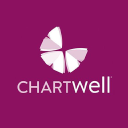
FMP
Enter
API Tools

Chartwell Retirement Residences
CSH-UN.TO
TSX
Chartwell is an unincorporated, open-ended real estate trust which indirectly owns and operates a complete range of seniors housing communities, from independent supportive living through assisted living to long term care. It is the largest operator in the Canadian seniors living sector with over 200 quality retirement communities in four provinces including properties under development. Chartwell is committed to its vision of Making People's Lives BETTER and to providing a happier, healthier and more fulfilling life experience for its residents.
12.7 CAD
-0.21 (-1.65%)
